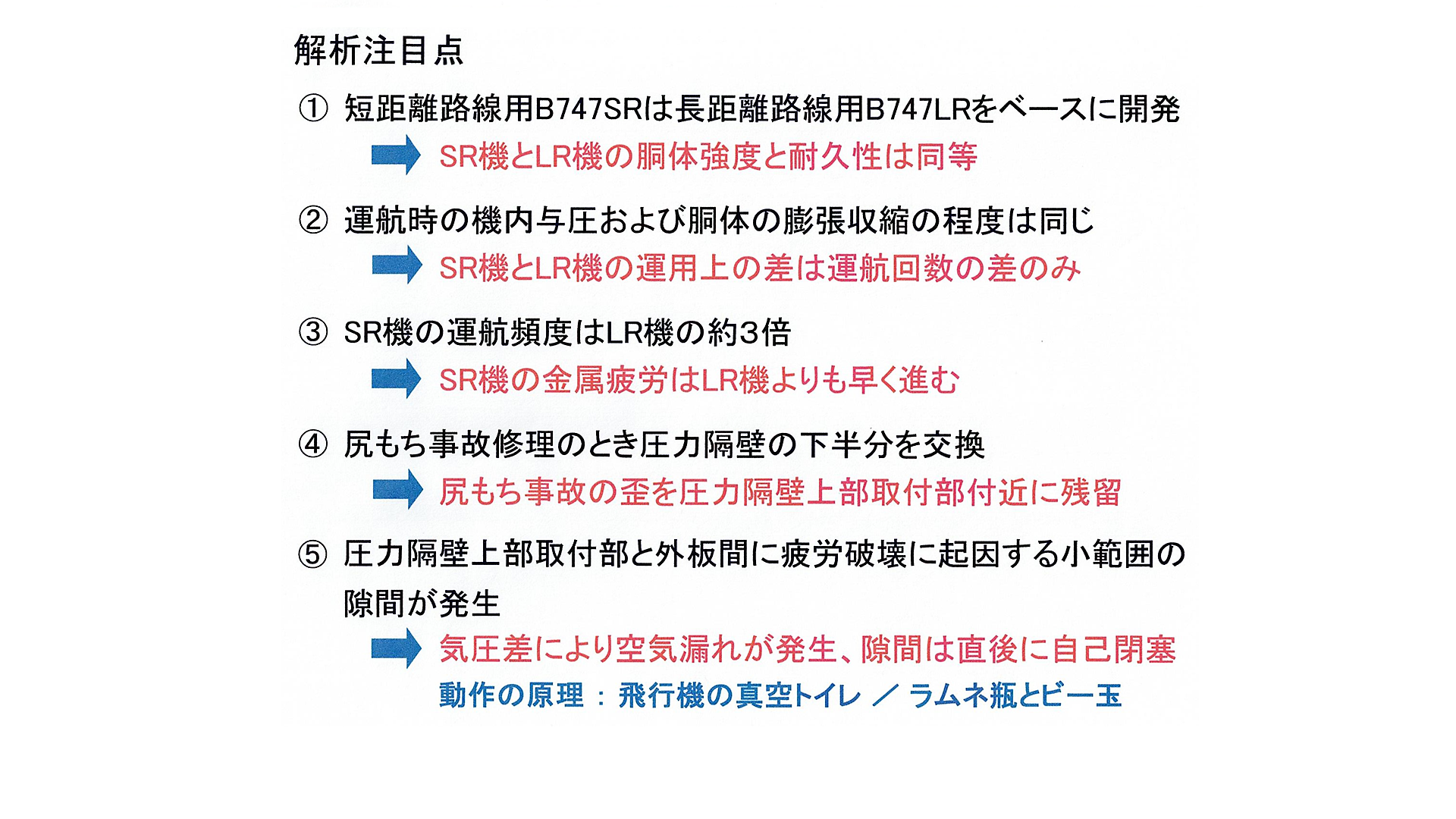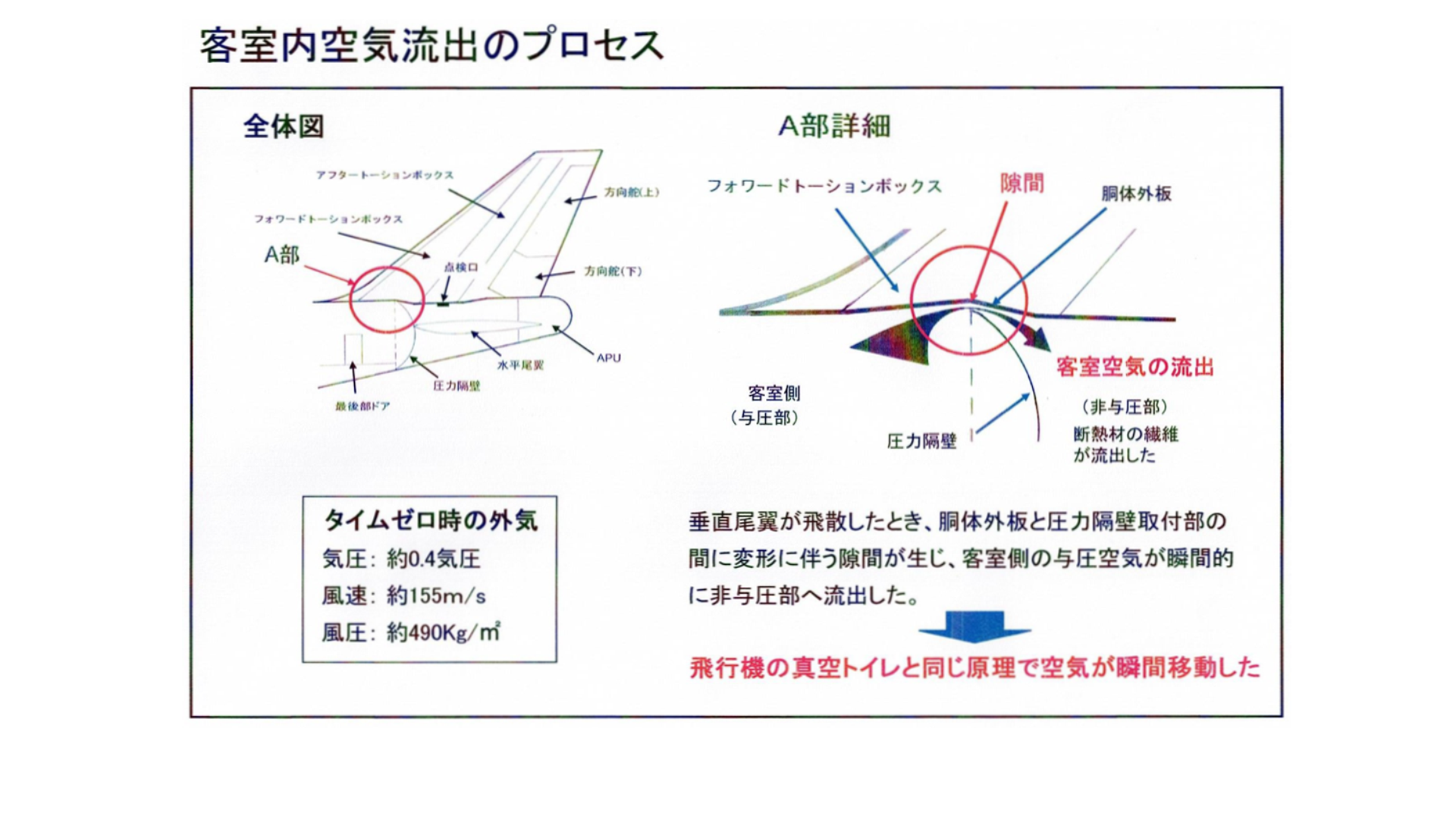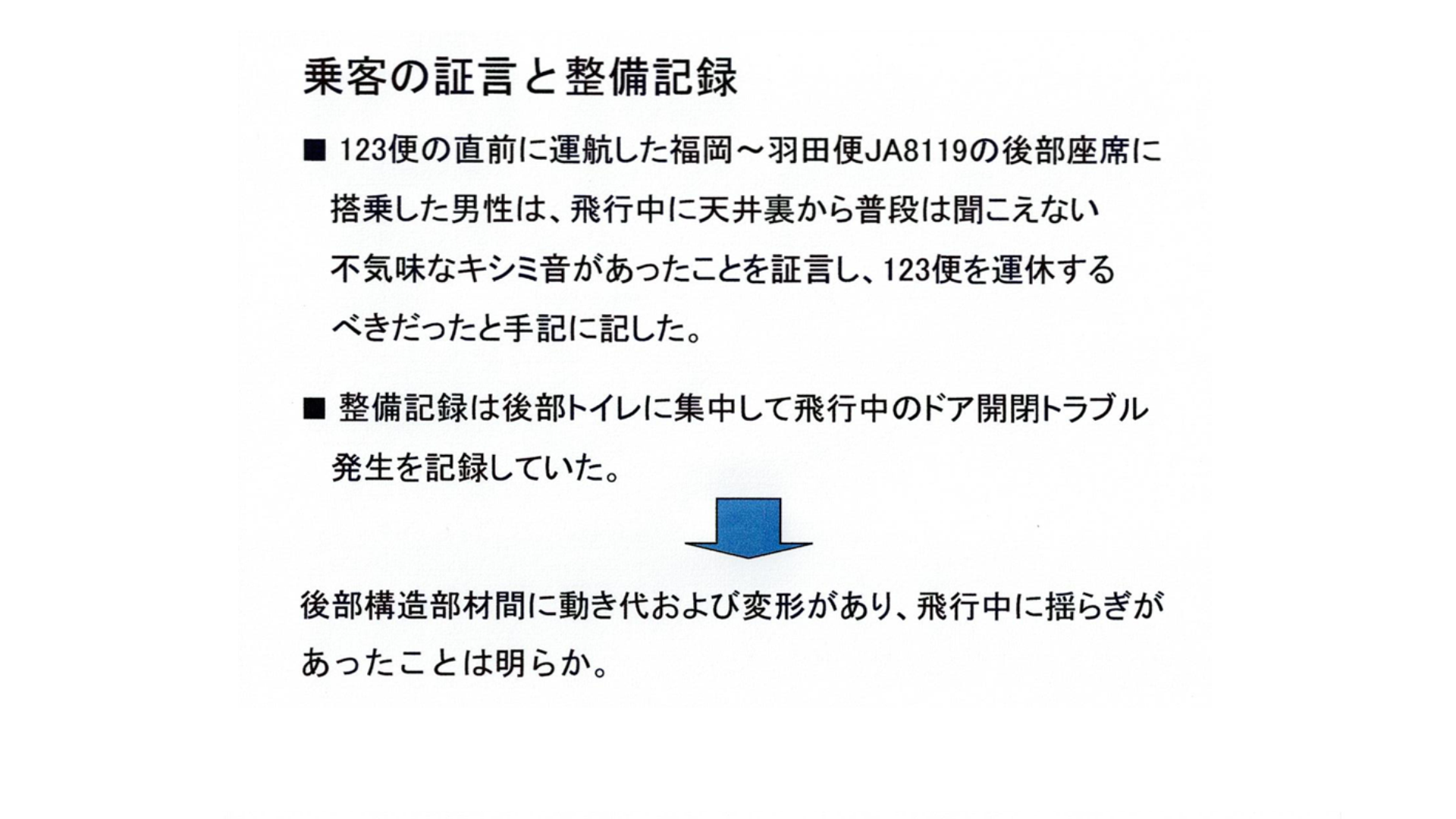Wings of Silence YouTube :Japanese audio with English subtitles
Records tell the truth about the Japan Airlines Flight 123 crash : Omnibus
English subtitles
1. Five points of failure analysis
I have summarized five points that I paid attention to in analyzing the cause of the crash. All of these facts are based on data, but many of them are also points that the Report did not touch on the core. Review in order.
The first point to note is that the SR and LR aircraft have the same fuselage, so the strength and durability of the rear fuselage structure of the two aircraft are the same. This fact has become a crucial factor, simplifying comparison of operating conditions and durability.
The second point to note is that JAL set the pressurization in the cabin of SR and LR aircraft to the same pressure. When the SR aircraft flies at a low altitude, the altitude of the in-flight pressurization is set to an altitude near the ground surface, so the degree of fuselage expansion during flight is the same for both SR aircraft and LR aircraft on all altitude routes.
From this fact, along with the first point of interest, the only operational difference between SR and LR aircraft was the number of flights per day.
The third is the fact that SR aircraft operated three times as often as LR aircraft per day. Therefore, the fatigue of SR aircraft has progressed more rapidly than that of LR aircraft. I will show you the data later.
The fourth is the fact that JA8119 had a record of repairing tailstrikes. The distortion caused by the deformation of the tailstrike accident remained near the mounting part of the upper half of the rear pressure bulkhead, which was not subject to repair.
In addition, the ground traveling characteristics of the B747 play a major role in the generation of strain on the outer periphery of the upper half of the pressure bulkhead, and the SR aircraft has by far the largest force that generates strain among short-range aircraft. I confirmed the actual situation.
This will also be confirmed later in the data.
The fifth is the phenomenon that the air in the cabin momentarily flows out to the non-pressurized part from the gap created near the fuselage skin and the pressure bulkhead connection part at the upper part of the pressure bulkhead.
However, since the gap was self-blocking immediately afterwards and the outflow of air stopped, people were able to maintain their consciousness without running out of oxygen for 32 minutes from the time zero.
The gap is believed to have been caused by the deformation of the vertical stabilizer when it was damaged. Here, I will review the key points of the gap and the phenomenon that air outflow occurs and stops.
The vertical stabilizer was damaged and scattered due to fatigue failure due to repeated left and right deformation that occurred each time the connection between the vertical stabilizer and the fuselage steered the rudder.
At this time, a small gap was created between the materials in part A in the figure. At this moment, the air in the cabin leaked, and at the same time, some of the heat insulating material in the cabin also scattered to the non-pressurized side.
The process of air outflow is exactly the same as the operation of an airplane vacuum toilet that uses the pressure difference between the inside and outside to instantly discharge and stop.
The energy of the vertical stabilizer destruction according to the Jikusen theory is the wind with a wind speed of about 155 meters that continuously flows outside, which is the force of the wind equivalent to a wind pressure of about 490 kg per square meter even in an atmosphere of 0.4 atm.
On the other hand, the report concludes that the jet output of the air in the cabin that broke through the pressure bulkhead destroyed the rear structure, so the basic difference between the two theories is what the destructive energy is. It will be a point.
Every time the rudder was steered, bending and torsional stress were generated near the mounting part of the vertical stabilizer, and fatigue accumulated. The number of rudders steered is estimated to be about 1 million by the time zero.
It is easy to imagine that the base of the vertical stabilizer, which has reached the limit of fatigue, was instantly destroyed by the strong wind power.
A man in the backseat of a flight that operated just before JAL123 had an eerie creaking noise that he had never heard from behind the ceiling during the flight, and he noted that he should have stopped flight 123. It is written.
The report does not contain this important testimony. It is clear that there was a creaking noise between the structures and the rear structures fluctuated during flight.








